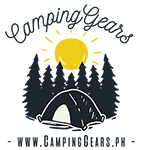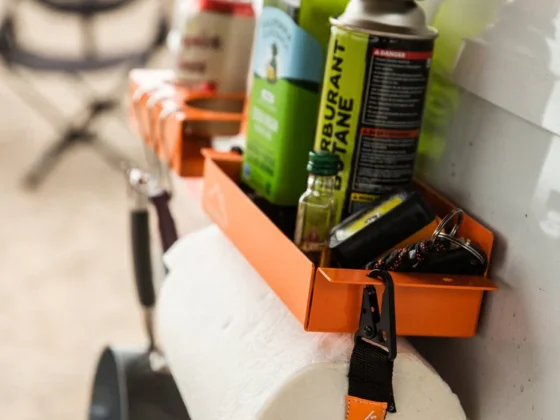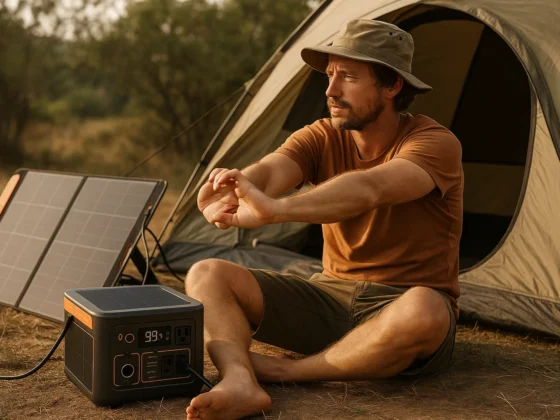There’s a special kind of freedom that comes from wandering deep into the woods, across coastal ridges, or up unmarked hills. But with that freedom comes responsibility—especially when it comes to navigation.
In the Philippines, where lush trails, steep ridgelines, and sudden rainstorms are common, it’s surprisingly easy to stray off course. And while getting lost might sound like the beginning of an adventure, it rarely ends that way. Navigation tools are not just for seasoned explorers; they are essential for any camper who values safety, preparedness, and peace of mind.
This article covers the most reliable navigation tools Filipino campers should carry, how to use them, and how to back them up—because even the most high-tech gear is only as good as its power supply.
The Big Three: Core Navigation Tools
There are dozens of tools that help with orientation in the outdoors, but every camper should be equipped with these three essentials:
1. Map (Topographic or Trail-Specific)
Physical maps may seem outdated, but they remain one of the most dependable tools available. A waterproof topographic map can reveal elevation, bodies of water, nearby roads, and shelter options.
Why it matters:
-
Doesn’t rely on batteries or signal
-
Provides a full overview of the terrain
-
Works as a visual backup for digital tools
Pro tip: Learn how to read contour lines and map legends. A simple skill that can prevent major missteps.
2. Compass
Pair a compass with a map, and you’ve got a bulletproof navigation duo. Digital GPS devices are great, but a compass works no matter the weather, location, or battery level.
Why it matters:
-
No charging required
-
Works even when visibility is poor
-
Compact and lightweight
Pro tip: Master basic orienteering before heading out. It takes less than an hour and pays dividends for a lifetime.
3. GPS Device or Smartphone with GPS App
Digital navigation makes finding waypoints and tracking hikes more intuitive. GPS apps like Gaia GPS or AllTrails offer downloadable offline maps, which are especially useful in remote areas.
Why it matters:
-
Real-time location tracking
-
Can store multiple trails, POIs, and notes
-
Many apps include emergency features or SOS alerts
Pro tip: Always download maps for offline use before the trip. Not all remote areas have cell signal or Wi-Fi.
Supplemental Navigation Tools You Shouldn’t Overlook
While the essentials are a must, there are other tools that round out your navigation kit and provide helpful redundancy.
1. Altimeter
Often integrated with a GPS watch, altimeters track elevation. This can help verify your position on a topographic map by comparing your altitude with contour lines.
2. Whistle
Not a navigation tool per se, but it plays a crucial role in orientation. A whistle can signal your location to fellow campers if you get separated.
3. Trail Markers or Reflective Tape
These are excellent for setting visual breadcrumbs on less-developed trails. They’re reusable and easy to spot at night.
4. Notebook and Pencil
Jotting down directions, compass bearings, or sketching rough maps can help immensely if batteries run out.
Training: Tools Mean Nothing Without Know-How
The best GPS or compass won’t help you if you don’t know how to use it. Before heading into the wild:
-
Take a map-reading course or watch reputable tutorials online.
-
Practice orienteering in familiar areas.
-
Review the route and create checkpoints before departure.
-
Inform someone of your itinerary and estimated return time.
Many local hiking clubs offer free or low-cost navigation workshops. If you’re serious about exploring off-grid, even one afternoon of training could be life-saving.
Navigation in the Philippines: Unique Challenges
Navigating the Philippine outdoors isn’t quite like hiking in national parks abroad. Here, conditions can change quickly. Here are a few region-specific challenges to account for:
-
Sudden weather shifts can turn clear trails into muddy confusion.
-
Dense forests reduce visibility and GPS accuracy.
-
Poor signage in many local trails or unofficial campsites.
-
Flash floods may erase familiar landmarks or safe paths.
These make it even more important to have multiple forms of navigation at your disposal—and to ensure your digital devices stay powered for the entire journey.
Staying Powered: Your Navigation Tools Are Only as Good as Their Battery
Whether using a GPS tracker, phone, or altimeter watch, your digital tools depend on power. That’s where reliable charging solutions come in.
For multi-day trips, or even single-day hikes under unpredictable weather, investing in the best power bank for camping is just as critical as the GPS app itself.
What makes a power bank camping-ready?
-
High capacity (10,000mAh and above): Enough to charge your phone multiple times.
-
Water-resistant or rugged casing: Built to survive falls, moisture, or extreme heat.
-
Multiple ports: Allows charging of phone, GPS, or even a headlamp simultaneously.
-
Solar compatibility: Ideal for long hikes where wall sockets don’t exist.
To avoid unexpected battery loss:
-
Turn devices to airplane mode when GPS isn’t in use.
-
Dim screen brightness.
-
Carry backup cords and adapters.
-
Store electronics inside dry bags or weatherproof pouches.
You can find a curated list of the best power bank for camping here, specifically suited to Philippine conditions.
Real-World Scenarios: Navigation Tools in Action
Let’s imagine a few common camping situations:
Scenario 1: Fog on the Trail
You’re hiking in Benguet and fog rolls in mid-afternoon. Your view narrows to ten feet. A GPS device shows you veering off-trail, and your compass helps realign you. A physical map confirms your alternate exit route.
Scenario 2: Phone Dies at Camp
After snapping photos all day in Rizal, your phone battery drops to 2%. With your power bank, you’re able to recharge just enough to access your offline trail maps and get back before nightfall.
Scenario 3: Off-Trail Exploration
Curiosity leads you off the beaten path in Tanay. To mark your way back, you use reflective tape and jot down bearings in your notebook. When the terrain becomes unclear, your altimeter confirms you’re still on the right slope.
When to Turn Back
Sometimes the bravest thing a camper can do is retreat. If your tools start to fail, your sense of direction weakens, or the environment becomes hostile, it’s wise to turn back.
Use the 30-minute rule: If you’ve been off-track for 30 minutes and can’t relocate yourself confidently, return to your last confirmed location. Always prioritize safety over pride.
Final Thoughts: Trust Your Tools, But Learn to Trust Yourself Too
Navigation tools—whether analog or digital—are only effective when combined with awareness, preparation, and sound judgment. They guide you, but it’s your decisions that keep you safe.
In the Philippines, where nature is both beautiful and unpredictable, carrying proper gear is a sign of respect—not just for the environment but for yourself and those hiking with you.
Equip yourself wisely, learn to use your tools, and never underestimate the importance of a good power source for your tech gear. With both traditional know-how and modern equipment like the best power bank for camping, you’ll be ready to explore with confidence.



